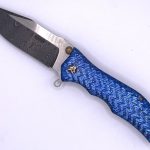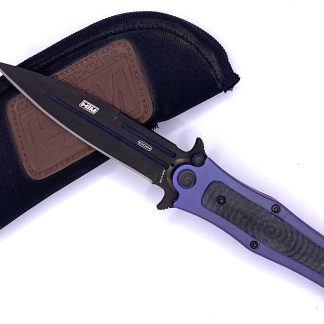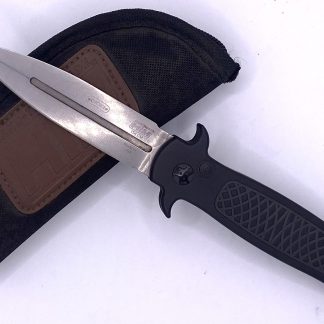
Chad Nichols Ladder Pattern Damascus refers to a specific type of Damascus steel pattern created by Chad Nichols, a renowned bladesmith and Damascus steel artisan. Damascus steel is not a specific type of steel but rather a method of forging and layering different types of steel to create a distinctive pattern on the blade. The ladder pattern is one of the many patterns that can be achieved through this process.
Here are some key characteristics of Chad Nichols Ladder Pattern Damascus:
- Pattern Design:
- The ladder pattern features a repeating series of diagonal lines that resemble the rungs of a ladder. This creates a visually striking and intricate design on the surface of the blade.
- Layering Technique:
- Damascus steel is typically made by forge-welding layers of different steels together. The ladder pattern involves manipulating and twisting the layers during the forging process to create the specific ladder-like appearance.
- Materials:
- Chad Nichols is known for working with various high-quality and exotic steel alloys, often combining stainless and tool steels. The choice of materials contributes to the overall performance and aesthetics of the Damascus steel.
- Expertise:
- Achieving a consistent and well-defined ladder pattern requires a high level of skill and craftsmanship. Chad Nichols is recognized for his expertise in creating intricate and high-quality Damascus patterns.
- Application:
- Knives with Chad Nichols Ladder Pattern Damascus are highly sought after for their artistic appeal. These knives are often used in custom and high-end production knives, as well as in collaboration with other knife makers.
- Customization:
- Chad Nichols may produce custom Damascus steel for knife makers, allowing them to use his signature ladder pattern in their own knife designs.
It’s worth noting that Damascus steel patterns, including the ladder pattern, are not only about aesthetics but can also influence the performance of the knife. The layering process can enhance qualities such as strength, flexibility, and edge retention.
Keep in mind that information about specific patterns and techniques used by bladesmiths may evolve over time, and it’s always a good idea to check directly with the artisan or manufacturer for the latest details on their creations.

